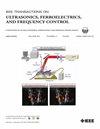环形阵列光声计算机断层扫描图像重建方法的比较。
IF 3.7
2区 工程技术
Q1 ACOUSTICS
IEEE transactions on ultrasonics, ferroelectrics, and frequency control
Pub Date : 2025-08-19
DOI:10.1109/TUFFC.2025.3600372
引用次数: 0
摘要
这项工作比较了环阵光声计算机断层扫描(PACT)系统的四种图像重建技术的有效性:延迟和和(DAS)、插值模型矩阵反演(IMMI)、基于频域模型的(FDMB)和时间反转(TR)方法。评估了图像质量,计算效率,对噪声和空间/电脉冲响应的鲁棒性,以评估四种二维(2D)成像方法。虽然它被认为在产生高分辨率和无伪影图像方面有局限性,但由于其简单和实时成像能力,DAS方法通常用于临床应用。另一方面,基于模型(MB)的方法,如IMMI和FDMB方法,以及TR方法利用综合物理学更准确地描述波在组织中的传播,因此有可能提供更高的图像质量和定量信息。然而,这些方法需要更多的处理能力,这使得它们不太适合实时应用程序。我们的研究结果表明,DAS方法实现了实时性能,同时为离体细长目标提供了更好的图像质量,而IMMI和FDMB方法都为薄层目标提供了增强的细节和分辨率,但代价是重建时间相当慢。TR方法在所有情况下都能获得合理的分辨率和细节,但显示出最慢的图像重建时间。这项工作突出了每种方法的优点和局限性,为选择最合适的环阵列PACT系统重建技术提供了有价值的见解。本文章由计算机程序翻译,如有差异,请以英文原文为准。
A Comparison of Image Reconstruction Methods for Ring-Array Photoacoustic Computed Tomography
This work compares the effectiveness of four image reconstruction techniques for a ring-array photoacoustic computed tomography (PACT) system: the delay-and-sum (DAS), the interpolated model matrix inversion (IMMI), the frequency-domain model-based (FDMB), and the time-reversal (TR) methods. Image quality, computational efficiency, and robustness to noise and spatial/electrical impulse response (EIR) are evaluated to assess the four methods for 2-D imaging. Although it is thought to have limitations in producing high-resolution and artifact-free images, the DAS method is commonly employed in clinical applications because of its simplicity and real-time imaging capability. On the other hand, model-based (MB) methods, such as the IMMI, the FDMB, and the TR methods, use comprehensive physics for a more accurate description of wave propagation through tissue and thus have the potential to provide higher image quality and quantitative information. These approaches, however, require substantially more processing power, which can make them less suitable for real-time applications. Our results show that the DAS method achieves real-time performance while delivering better image quality for an ex vivo elongated target, whereas both the IMMI and the FDMB methods provide enhanced detail and resolution for thin-slice targets, at the cost of considerably slower reconstruction times. The TR method achieves reasonable resolution and detail for all cases but shows the slowest image reconstruction time. This work highlights the strengths and limitations of each method, offering valuable insights into selecting the most appropriate reconstruction technique for ring-array PACT systems.
求助全文
通过发布文献求助,成功后即可免费获取论文全文。
去求助
来源期刊
CiteScore
7.70
自引率
16.70%
发文量
583
审稿时长
4.5 months
期刊介绍:
IEEE Transactions on Ultrasonics, Ferroelectrics and Frequency Control includes the theory, technology, materials, and applications relating to: (1) the generation, transmission, and detection of ultrasonic waves and related phenomena; (2) medical ultrasound, including hyperthermia, bioeffects, tissue characterization and imaging; (3) ferroelectric, piezoelectric, and piezomagnetic materials, including crystals, polycrystalline solids, films, polymers, and composites; (4) frequency control, timing and time distribution, including crystal oscillators and other means of classical frequency control, and atomic, molecular and laser frequency control standards. Areas of interest range from fundamental studies to the design and/or applications of devices and systems.

 求助内容:
求助内容: 应助结果提醒方式:
应助结果提醒方式:


